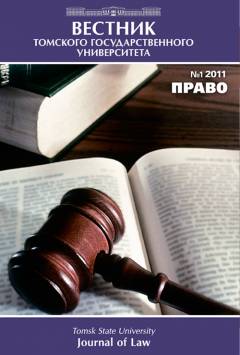The abuse of right category in criminal procedure of Russia: an inter-branch view
The notion of abuse is a matter of intellectual discourse both in the field of civil law and theory of criminal procedure. It is worth noting that the above concept was extensively used and applied in civil law a long time ago as compared with criminal procedure. Civil law contains the notion and characteristics of abuse whereas the definitions of abuse in criminal procedure are different. Civil law interprets them as the use of unlawful concrete forms within the frame of a lawful, general type of behavior while in criminal procedure it is an accepted way of realizing subjective right contrary to its purpose. The distinctive borderline of abuse in civil law is less evident than in criminal procedure where the emphasis is on the contradiction between the actions of an authorized person and the purpose of the right. Criminal court practice highlights various forms of abuse but many processualists are against the introduction of this notion into the text of law. Originally, the official notion of "the abuse of right" was introduced by the Decree of the Plenum of the Supreme Court of the Russian Federation №29 of 30.06.2015(Item 18). However, the purposefulness of the use of this category in criminal procedure still raises doubts. Taking into account the theory of civil law and established criminal court practice we can state that it is necessary to entrench the category of the abuse of right in current Criminal Procedure Code of the Russian Federation and provide it with a detailed order of realization to eliminate subjectivism in the interpretation of this notion.
Keywords
злоупотребление правом, уголовный процесс, гражданское право, abuse of right, criminal procedure, civil lawAuthors
| Name | Organization | |
| Azarov Vladimir A. | Omsk State University | kafprokrim@mail.ru |
| Nurbaev Daulet M. | Omsk State University | daulet_mn@mail.ru |
References

The abuse of right category in criminal procedure of Russia: an inter-branch view | Tomsk State University Journal of Law. 2016. № 3(21). DOI: 10.17223/22253513/21/1